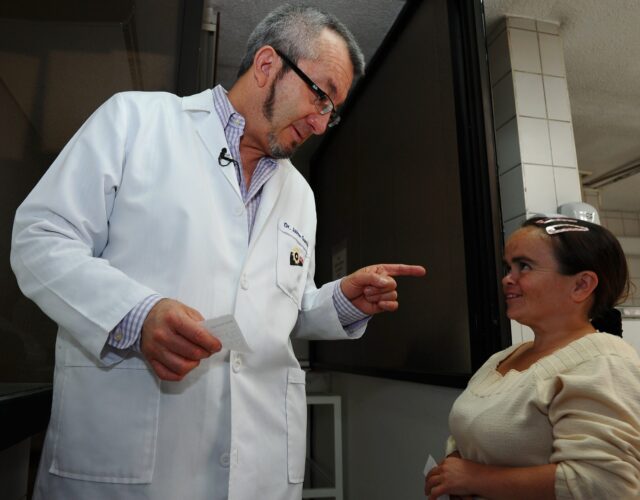In the mid-1980s Jaime Guevara-Aguirre made a bet with his father. Guevara-Aguirre had just graduated from medical school in Ecuador, but he wasn’t happy. He had attended medical school mostly to please his father. So after earning his degree Guevara-Aguirre rebelled and asked his father to fund a new clinic where the young doctor could pursue scientific research instead.
His father responded by asking a seeming non sequitur: What is the most prestigious medical journal in the world? Probably the New England Journal of Medicine, Guevara-Aguirre replied. Why?
His father agreed to fund the clinic, with one catch. Guevara-Aguirre had to publish a paper in NEJM within 10 years—or lose his funding. However nervous, Guevara-Aguirre accepted the bet. Now he just needed a research topic.
For this, he turned to a memory. While living in rural southern Ecuador as a boy, he had seen an unusually high number of dwarfs. Returning to the area as an adult, he found nearly 100 dwarfs, of all ages, in a handful of towns there. These men and women often looked similar, with tiny faces, sparse hair, and sunken nasal bridges. Guevara-Aguirre suspected a common genetic cause for their appearance and soon discovered the culprit, a DNA mutation that disabled the cellular receptors for growth hormone. This lack of a working receptor rendered their cells “blind” to the hormone, preventing the chemical cascade that promotes growth from ever getting started. After some historical sleuthing he also determined that all the dwarfs probably descended from a single Jew (or a few related Jews) who fled from the Inquisition in Spain to South America several centuries ago.
By itself this would have been the medical discovery of a lifetime. But in getting to know his new patients, Guevara-Aguirre uncovered something truly incredible. He could find only one case of cancer and zero instances of diabetes among them. (In a control group of Ecuadorians, 5% had diabetes and 17% had cancer. Given those numbers the odds of Guevara-Aguirre’s patients having disease rates that low by chance alone were roughly 0.006% and 0.0000002%, respectively.) This discrepancy was all the more remarkable considering that one side effect of this type of dwarfism is obesity, which typically raises rates of cancer and diabetes. But not in his patients. They’re virtually immune to two of the most devastating diseases of modern life.
Obviously, this discovery could have huge medical implications if scientists can tease out the underlying biochemistry. Preliminary work indicates that growth hormone, in addition to boosting height, helps regulate the amount of fuel that cells consume. Cancer cells often exploit the body’s fuel system to enable cell growth at unsustainable rates. But in dwarfs with deficient growth-hormone receptors, tumors simply can’t do so. As a bonus the cells of the people Guevara-Aguirre studies have fewer DNA breaks than the cells of most other people, providing further insurance against cancer.
The link between diabetes and growth hormone is more convoluted and remains somewhat opaque. But it makes sense that cells that grow less would consume less fuel and would therefore need less insulin, a molecule that helps them absorb and metabolize glucose. And the dwarfs do indeed have lower levels of insulin in their blood. Regardless, their cells remain responsive to insulin throughout their lives, and diabetes, therefore, never develops.
In talking about medical breakthroughs you have to be wary of hype. And finding an actual cure for diabetes and cancer won’t be simple. Throughout history hundreds of promising treatments have fallen by the wayside after scientists couldn’t take successes made in petri dishes and animal studies and reproduce them in actual human beings. But Guevara-Aguirre’s work proves that whole human populations really can live and die without these ailments. It’s also reassuring to know that because some of the same chemical pathways are involved, progress fighting cancer could provide leads on fighting diabetes, and vice versa. Who would have ever guessed that dwarfism, cancer, and diabetes all had links to one simple chemical?
Guevara-Aguirre has now spent a quarter-century documenting the lives of these dwarfs, making his medical study one of the longest running in the world. And he’s still doing so from the clinic his father funded. Guevara-Aguirre published his first NEJM article in 1990, beating his father’s deadline. Medical research is always a gamble: there’s no guarantee it will ever pay off. But if this work produces new treatments for cancer or diabetes, the young Guevara-Aguirre’s wager could deliver one of the biggest payouts ever for humankind.




